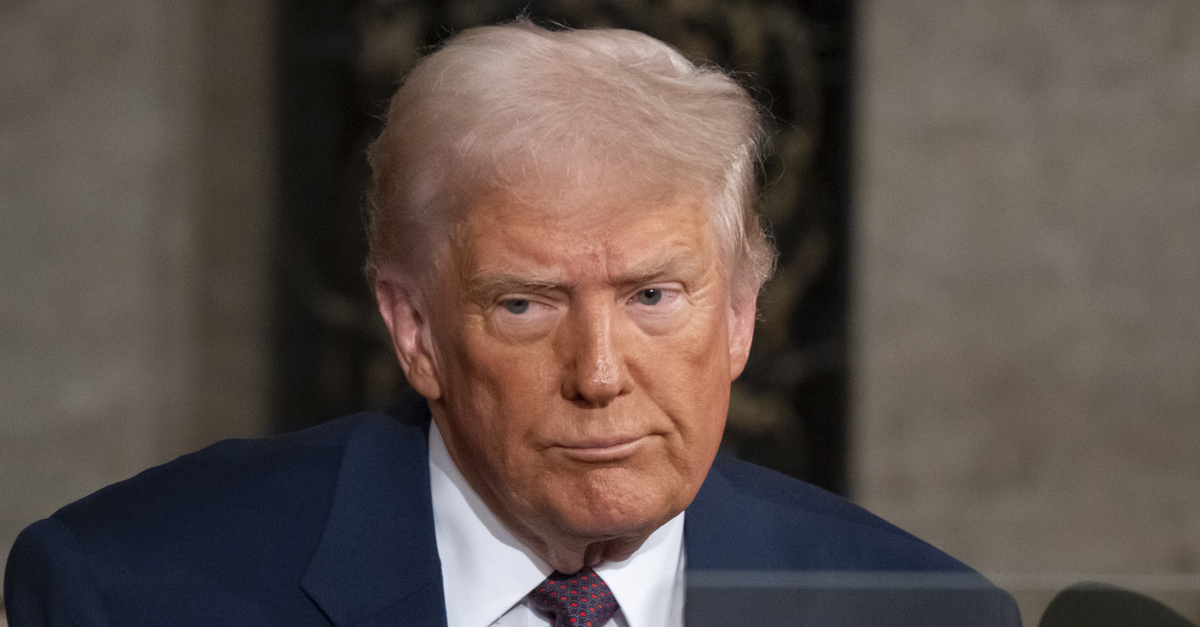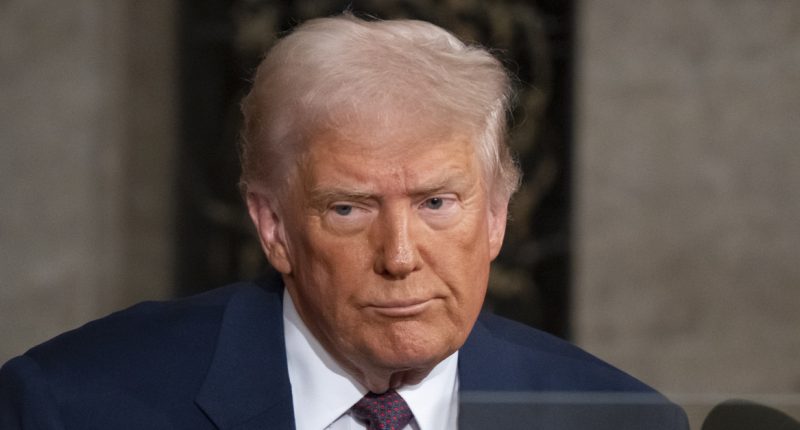
President Donald Trump addresses a joint session of Congress on Capitol Hill in Washington, Tuesday, March 4, 2025 (AP Photo/Alex Brandon).
A federal judge on Thursday reinstated, for the foreseeable future, a member of the National Labor Relations Board who sued to regain her position following her “unlawful” removal by President Donald Trump.
On Jan. 27, the 45th and 47th president sent Gwynne A. Wilcox, a Joe Biden appointee, a late-night email tarring her as a “far-left” NLRB appointee who had “no place” in the second Trump administration.
But under the federal law governing the nearly 100-year-old labor dispute agency, an early termination requires far more than just the “political motivations” outlined in the email, a court determined.
In a 35-page memorandum opinion, U.S. District Judge Beryl A. Howell, a Barack Obama appointee, ruled firmly in Wilcox’s favor by granting her both declaratory relief and a permanent injunction.
“The President does not have the authority to terminate members of the National Labor Relations Board at will, and his attempt to fire plaintiff from her position on the Board was a blatant violation of the law,” the court’s opinion reads. “Defendants concede that removal of plaintiff as a Board Member violates the terms of the applicable statute, and because this statute is a valid exercise of congressional power, the President’s excuse for his illegal act cannot be sustained.”
The court’s order mirrors some of the language used by the plaintiff in her original petition. The order is also the latest in a series of recent vintage court decisions in the federal district to consider itself the progeny of a 1935 Supreme Court case which has proven decisive for civil servants hoping to avoid the Trump administration’s ax.
On Feb. 5, Wilcox filed an 8-page lawsuit in Washington, D.C., calling her firing “a blatant violation of the National Labor Relations Act.” On Feb. 10, the plaintiff moved for summary judgment. On Feb. 21, the government filed a cross-motion requesting dismissal on summary judgment. On March 5, the parties appeared at a hearing where oral argument featured that aforementioned high court case — before focusing on a controversial theory of extreme executive power.
The unitary executive theory once largely resided in the domain of law review and other academic articles — or at most as a pejorative characterization used to frame government actions opposed by plaintiffs in federal lawsuits. During the hearing, however, Howell said the theory has essentially been embraced by the current government.
“It’s no longer theoretical,” she said, almost laughing while addressing Wilcox’s lawyer. “It’s here for us, for how we’re going to be governed.”
The court’s order, in exceedingly strongly worded terms, pushes back against the theory now offered by the U.S. Department of Justice.
After briefly outlining the debate between critics and devotees of the theory, the judge finds no support for it in the U.S. Constitution.
“To start, the Framers made clear that no one in our system of government was meant to be king — the President included — and not just in name only,” Howell writes. “Indeed, the very structure of the Constitution was designed to ensure no one branch of government had absolute power, despite the perceived inefficiencies, inevitable delays, and seemingly anti-democratic consequences that may flow from the checks and balances foundational to our constitutional system of governance.”
In the same — or at least a similar — vein, there is nothing the Constitution provides for how to remove an executive branch officer.
“As pertinent here, the Constitution does not, even once, mention ‘removal’ of executive branch officers,” the opinion goes on. “The only process to end federal service provided in the Constitution is impeachment, applicable to limited offices (like judges and the President) after a burdensome political process.”
Howell, however, does not throw up her hands over the “constitutional silence.” In each case — the proper separation of powers; how to remove an officer — there are places that courts look. Namely, “[h]istorical practice and a body of caselaw,” the judge observes.
There, the government’s arguments are wholly off-base, the judge says.
“In the ninety years since the NLRB’s founding, the President has never removed a member of the Board,” the opinion continues. “His attempt to do so here is blatantly illegal, and his constitutional arguments to excuse this illegal act are contrary to Supreme Court precedent and over a century of practice.”
The precedent in question, Humphrey’s Executor, stands for the idea that Congress intended to keep “quasi judicial and quasi legislative” agencies largely insulated from the whims of the president.
The upshot of the case, cited 71 times in the opinion, is clear.
“The Board is a paradigmatic example of a multimember group of experts who lead an independent federal office,” Howell writes. “Since the early days of the founding of this country, Congress, the President, and the Supreme Court all understood that Congress could craft executive offices with some independence, as a check on presidential authority. That understanding has not changed over the 150-year history of independent, multimember commissions, nor over the 90-year history of the NLRB.”
The National Labor Relations Act (NLRA), the originating statute that created the NLRB, was passed two months after the Supreme Court’s 1935 opinion “with the guidance supplied in Humphrey’s Executor,” the judge says.
Under the terms of the NLRA, members of the NLRB can only be fired for two reasons: “neglect of duty or malfeasance in office.” These limited bases are known as “for-cause” removal protections.
Love true crime? Sign up for our newsletter, The Law&Crime Docket, to get the latest real-life crime stories delivered right to your inbox.
The Trump administration, for their part, did not argue against Humphrey’s Executor — and conceded it is binding precedent. Instead, the DOJ claimed the for-cause removal terms in the NLRA are unconstitutional in relation to the president’s executive power.
The judge rubbished that argument in no uncertain terms, at length:
A President who touts an image of himself as a “king” or a “dictator,” perhaps as his vision of effective leadership, fundamentally misapprehends the role under Article II of the U.S. Constitution. In our constitutional order, the President is tasked to be a conscientious custodian of the law, albeit an energetic one, to take care of effectuating his enumerated duties, including the laws enacted by the Congress and as interpreted by the Judiciary. At issue in this case, is the President’s insistence that he has authority to fire whomever he wants within the Executive branch, overriding any congressionally mandated law in his way. Luckily, the Framers, anticipating such a power grab, vested in Article III, not Article II, the power to interpret the law, including resolving conflicts about congressional checks on presidential authority. The President’s interpretation of the scope of his constitutional power — or, more aptly, his aspiration — is flat wrong.
“The President seems intent on pushing the bounds of his office and exercising his power in a manner violative of clear statutory law to test how much the courts will accept the notion of a presidency that is supreme,” the opinion concludes. “The Constitution and caselaw are clear in allowing Congress to limit the President’s removal power and in allowing the courts to enjoin the executive branch from unlawful action … An American President is not a king — not even an ‘elected’ one — and his power to remove federal officers and honest civil servants like plaintiff is not absolute, but may be constrained in appropriate circumstances, as are present here.”






